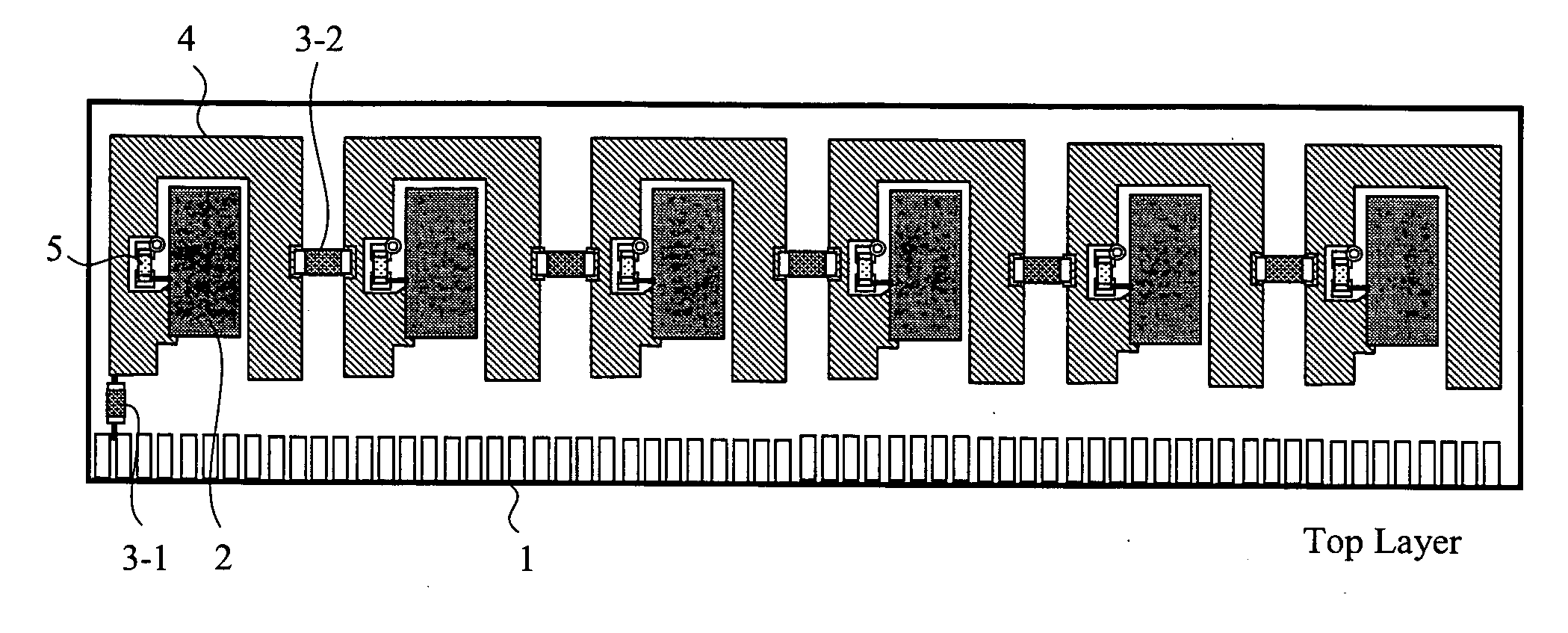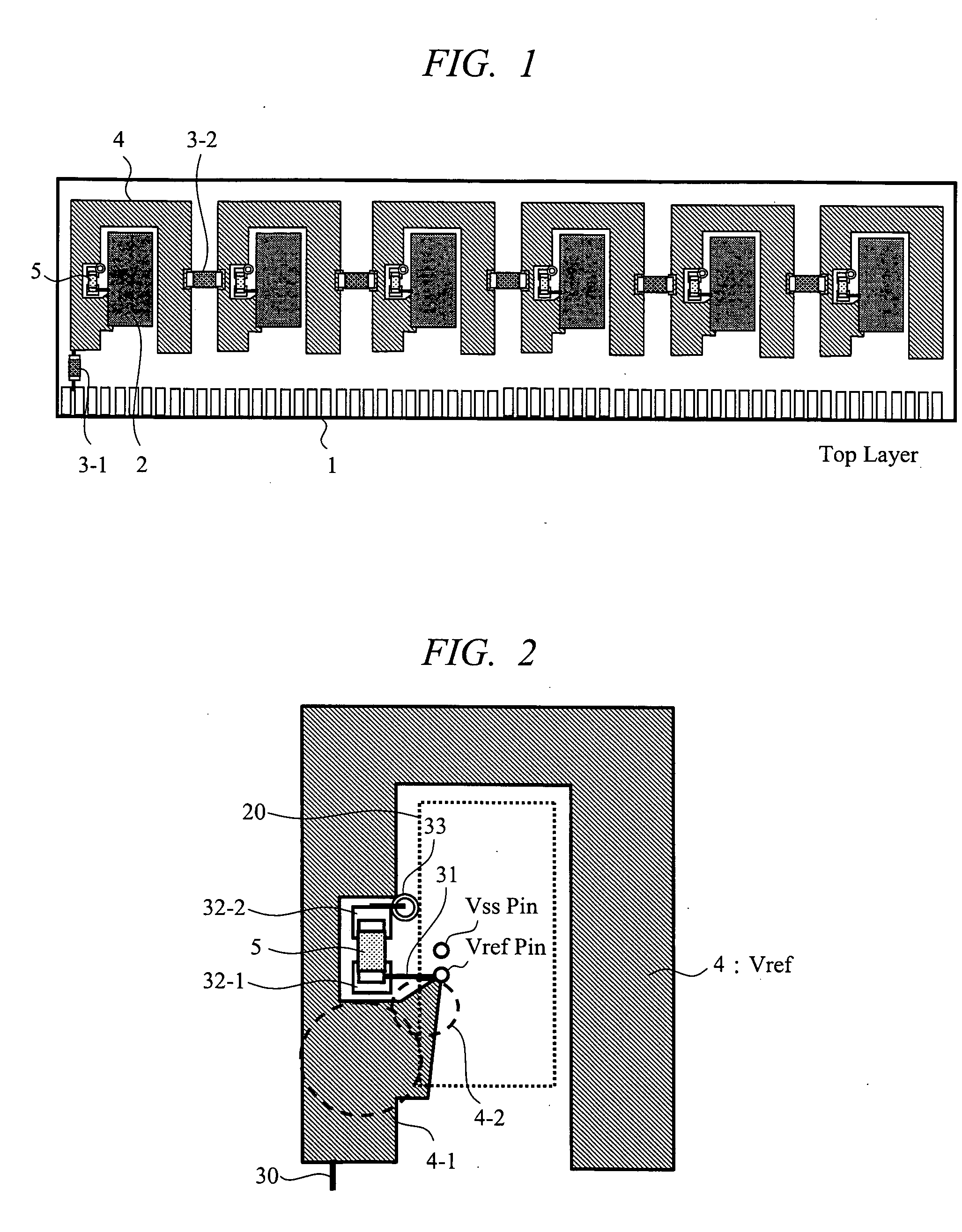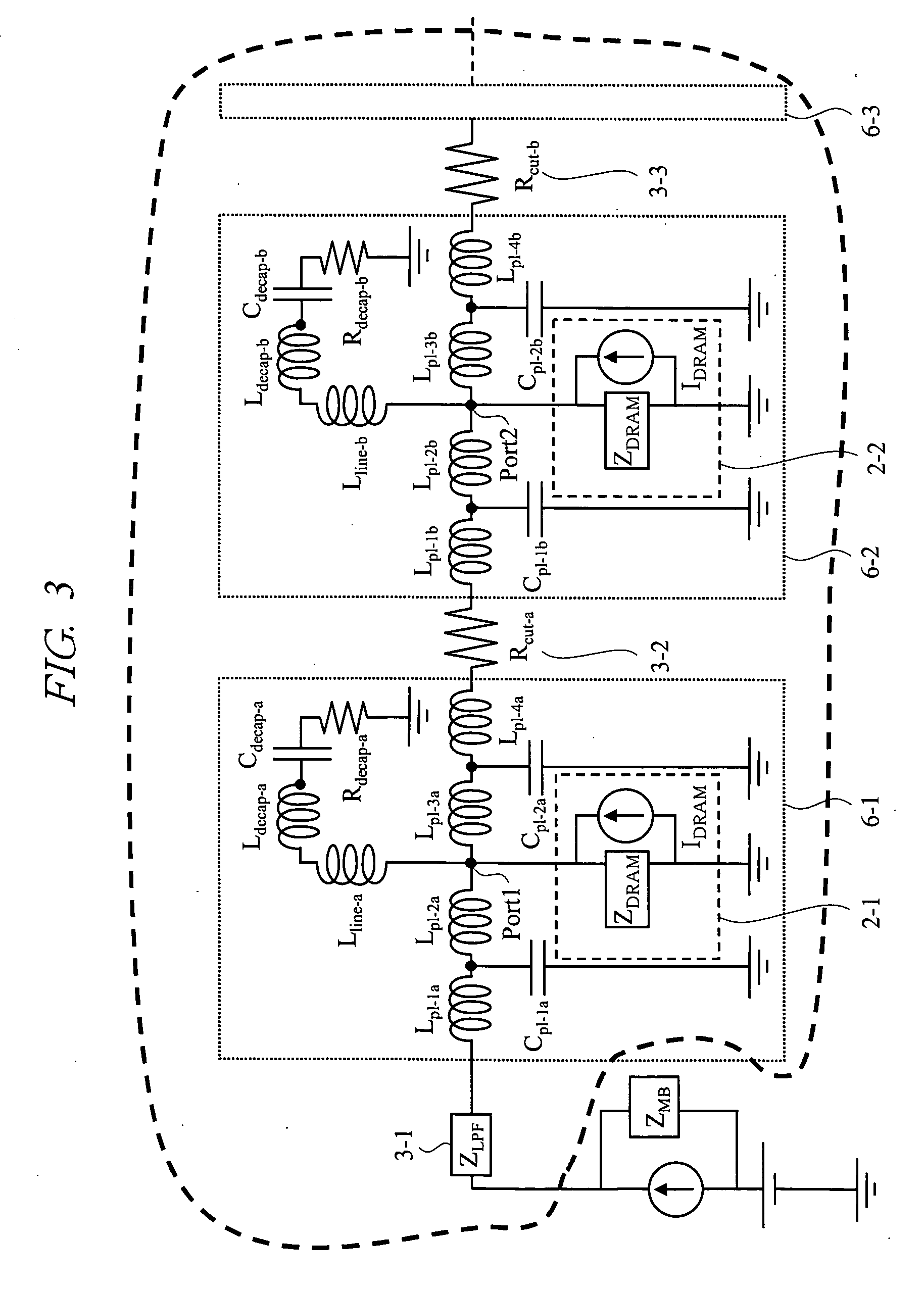Module
- Summary
- Abstract
- Description
- Claims
- Application Information
AI Technical Summary
Benefits of technology
Problems solved by technology
Method used
Image
Examples
fourth embodiment
[0094] One example of a memory module according to a fourth embodiment will be explained with reference to FIG. 14.
[0095] The fourth embodiment is an improved one of conventional wire feeding system, where one layer of inner layers is prepared for Vref wiring so that propagation noise is reduced as much as possible.
[0096] A wiring method will be explained. A Vref wire from a connector portion is connected to a high impedance chip part 3-1 of an LPF shown in FIG. 14, and after passing through the LPF, it is connected to an inner layer at a Via 34-1. The Vref wire is connected on a Vref layer which is the inner layer from the Via 34-2 to a Vref plane 4-1 prepared just below a mounting position of a first memory by a wire 7-1. The Vref plane 4-1 is connected to a Vref line of a memory through a Via 34-5 connected to a portion of the memory positioned near a Vref pin at a low impedance. A decoupling capacitor 5-1 for Vref is mounted on a TOP layer, and it is connected to the Vref pin ...
fifth embodiment
[0099] The first to fourth embodiments adopt the low noise wiring system in the system where a Vref voltage is supplied from a motherboard. Fifth to eighth embodiments are for realizing a wiring system utilized when Vref is generated inside a module. Basically, the fifth to eighth embodiments have a constitution that the thought (Vref is supplied externally) in the first to fourth embodiments is replaced with Vref internal generation. Here, the Vref internal generation means that, since Vref generally has a voltage value of ½ of a power source voltage Vdd of a memory, it is generated by performing Thevenin's termination on Vdd and Vss in the module. Here, the Thevenin's termination means connecting of Vref wire (plane) to Vdd and Vss respectively using two resistors having the same resistance.
[0100] One example of a memory module according to the fifth embodiment will be explained with reference to FIG. 15.
[0101] The fifth embodiment has a constitution that the first embodiment is...
sixth embodiment
[0102] One example of a memory module according to the sixth embodiment will be explained with reference to FIG. 16.
[0103] The sixth embodiment has a constitution that the second embodiment is modified for Vref internal generation. The sixth embodiment is different from the second embodiment in that there is not any wire from a motherboard (therefore, there is not a Vref wire of the inner layer) and two chip resistors for Vref generation (10-1, 10-2) are mounted on the Vref plane 4-2 in the former.
PUM
 Login to View More
Login to View More Abstract
Description
Claims
Application Information
 Login to View More
Login to View More - R&D
- Intellectual Property
- Life Sciences
- Materials
- Tech Scout
- Unparalleled Data Quality
- Higher Quality Content
- 60% Fewer Hallucinations
Browse by: Latest US Patents, China's latest patents, Technical Efficacy Thesaurus, Application Domain, Technology Topic, Popular Technical Reports.
© 2025 PatSnap. All rights reserved.Legal|Privacy policy|Modern Slavery Act Transparency Statement|Sitemap|About US| Contact US: help@patsnap.com



